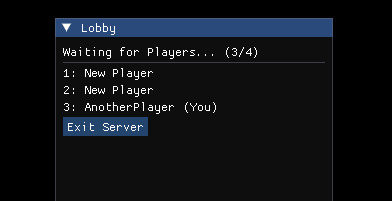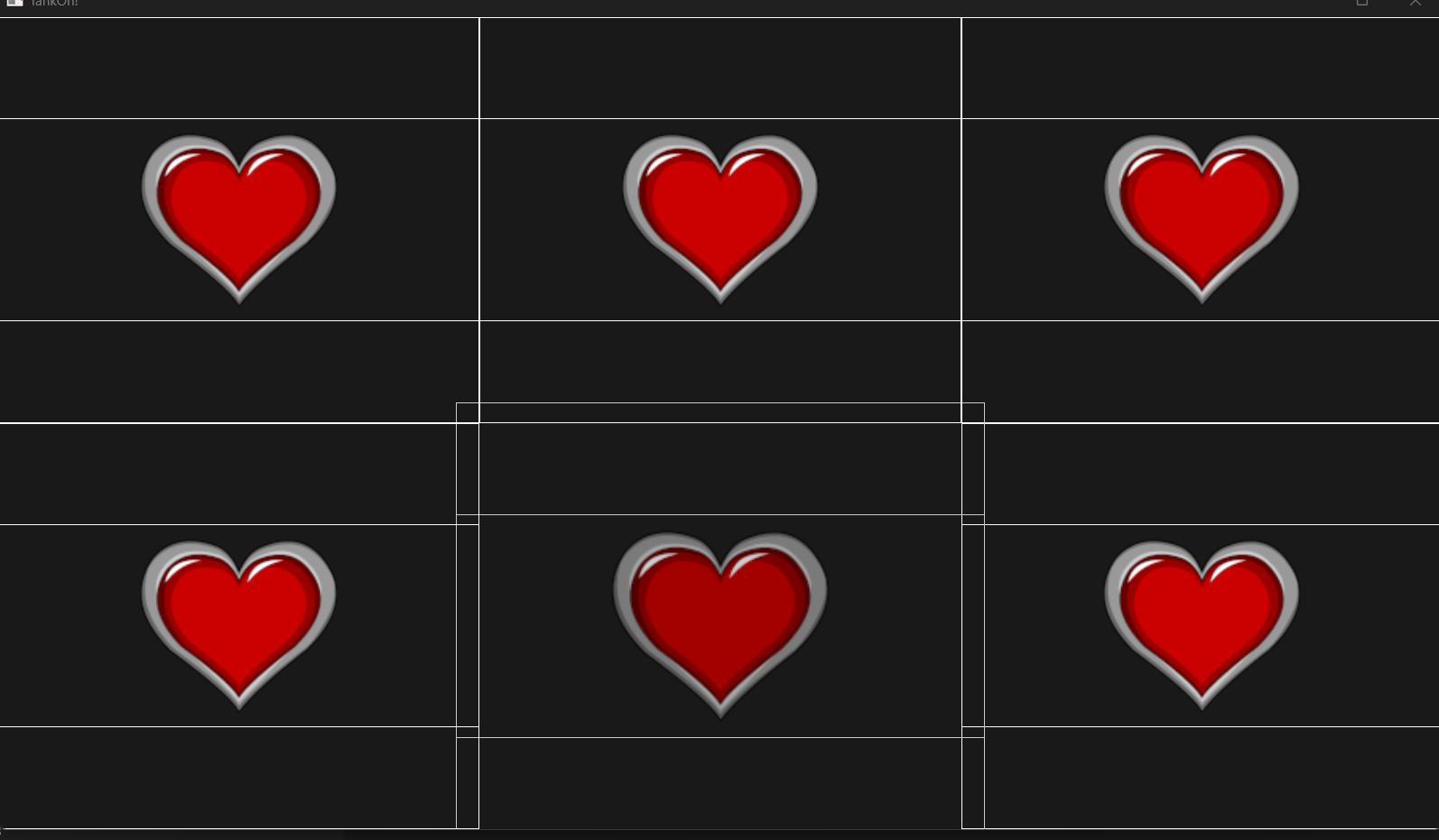Introduction
TankOn! is a versus topdown shooter for 2-4 players and my first study into creating multiplayer games and networking! It uses SDL as a backend and Boost.Asio for networking.
All the code is available on my GitHub!
What I did
- Networking using Boost.Asio
- Patterns for gameplay messages between Server/Client
- UI Framework and Widgets
- SDL Rendering, Windowing, Input and Audio
- Signals and Slots for UI
Networking using Boost.Asio
As my first study into multiplayer games, I used Boost.Asio as my main entry point to the domain.
I created a basic TCP connection class that handled message reading and writing from sockets asynchronously. Each message is comprised of a header describing the type and size of the message and the body, which is optional and is variable in size. This is already enough to implement some basic ping functionality:

With this I learned how asynchronous programming uses completion handlers to compose basic tasks into more complex ones.
Server-Client behaviour and gameplay
In order to go from pinging to server-client gameplay, I created abstractions for TCP acceptors and resolvers that accepted callbacks to handle connections. This gave me great flexibility when it came to implementing a lobby system and gameplay.

The gameplay was easy to implement, although there are some smart things I did about reducing the amount of message passing:
- Each client updates their tank position and sends it to the server, that is then bounced to other clients.
- Since bullets travel in a straight line, I only need to send their starting position and starting time to all the clients instead of sending messages every frame.
- Tank to bullet collisions are done in the server side.
For serialization and deserialization of all this data, I used Cereal.
UI Widgets and Input
I explored using Boost.Signals2 to create a flexible UI framework. The entire system uses a tree data structure implementation to represent a Menu as a tree of multiple UI nodes (that can be widgets):

At a macro level, menus exist in a stack data structure where the top element is drawn (other systems might have it drawn on top of the previous ones). This is a very useful design pattern that I utilized for UI, since it fits nicely into the intuitive way of going into a menu and going back to the previous one active (pushing and popping).
// Initialization
main_menu = MakeMainMenu(*this);
settings_menu = MakeSettingsMenu(*this);
menu_stack.push(&main_menu);
// Drawing and updating
UICursorInfo ui_input {};
ui_input.cursor_position = mouse_pos;
ui_input.cursor_state = cursor;
ui_input.deltatime = deltatime;
ui_input.typed_characters = input_text;
if (!menu_stack.empty())
{
ZoneScopedN("UI Drawing");
menu_stack.top()->Draw(renderer, ui_input);
}
For drawing individual widgets, they are stored as a tree owned by the respective menu: drawing the UI is as easy as iterating the tree depth-first (Note: I did not need to do Z ordering for the simple framework I was creating):
// Defined aliases in the Menu class
using NodeTree = tr::tree<std::unique_ptr<UINode>>;
using NodeIterator = NodeTree::iterator;
void Menu::Draw(Renderer& renderer, const UICursorInfo& cursor_params)
{
glm::vec2 frame_size = glm::vec2(renderer.GetFrameAspectRatio(), 1.0f);
UIDrawInfo initial { frame_size * 0.5f, frame_size, colour::WHITE };
// loop through all root ui elements
for (auto it = elements.begin(); it != elements.end(); it = elements.next_sibling(it))
DrawElement(renderer, it, initial, cursor_params);
}
void Menu::DrawElement(Renderer& renderer, NodeIterator iterator, const UIDrawInfo& parent_info, const UICursorInfo& cursor_params)
{
auto& elem = **iterator;
if (!elem.active) return;
UIDrawInfo current_draw_info = parent_info * elem.local_transform;
elem.Draw(renderer, current_draw_info, cursor_params);
// Loops through all child elements
for (auto it = elements.begin(iterator); it != elements.end(iterator); ++it)
DrawElement(renderer, it, current_draw_info, cursor_params);
}